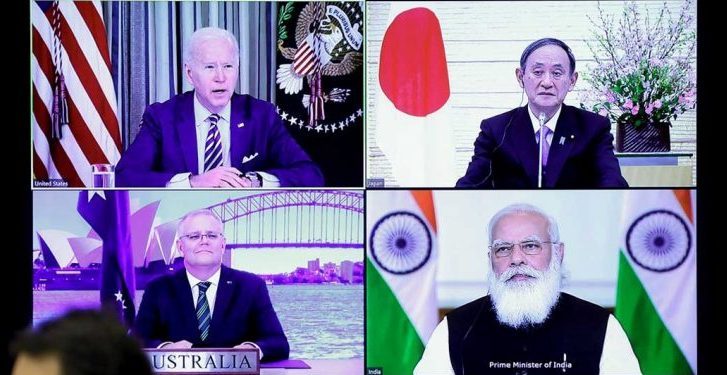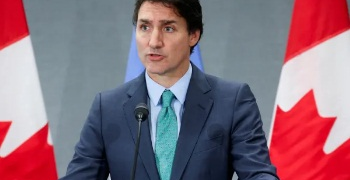The Quad virtual summit, attended by the heads of states of USA, Japan, Australia and India for the first time 12 March, came up with a new tactic to stop China. The four countries of the group have pledged to deliver a billion doses of Covid-19 vaccine throughout the Indo-Pacific region by the end of 2022, in what is believed to be an attempt to counter China’s influence in the region.
The Quad vaccine, as against the Chinese vaccine, is expected to allow the group to play a role in the region that has been a major beneficiary of Beijing’s so-called vaccine diplomacy. The promise of the vaccine, a major takeaway of the summit, follows the Biden administration’s decision to make the region and competition with China a focus of its national security agenda. Southeast Asia has been a major recipient of Chinese-made vaccine doses in recent months, with hundreds of thousands of donations from Beijing being sent to Cambodia, Laos and the Philippines. Thailand and Indonesia have also received millions of doses through commercial deals.
Domestic considerations in the four countries also appear to be the reasons for formulating the vaccine strategy to take on China. Australia has had a relatively low number of cases while Japan is keen to ensure the delayed Olympics go ahead this year. The US has recorded more infections than any other country, touching over 29 million cases so far. The Biden administration has now pledged US$4 billion over two years to support a WHO vaccination programme that Trump had refused to join.
India, being a global leader in vaccine production, will have to deal with the pressure of vaccinating its own citizens as well as providing for this new load. India’s indigenous vaccine Covaxin, produced by Bharat Biotech, aims to produce 700 million doses from its four facilities by the end of the year. On the other hand, the Oxford-Astra Zeneca vaccine Covishield, manufactured by Serum Institute, claims to be producing over 50 million doses a month. India has by now exported 58 million doses of vaccines to 71 countries in Latin America, the Caribbean, Asia, Africa, UK, Canada, Brazil and Mexico. Both the vaccines have been shipped in the form of gifts as well as part of commercial agreements.
The US, Japan and Australia have pledged to give at least US$600 million to support the roll-out of vaccines throughout the Indo-Pacific, including last-mile vaccine delivery. The countries will also work with the WHO in its global vaccine drive.
The leaders also discussed maritime and other issues. It must be remembered that India’s hope that a mighty military backing by the US, Japan and Australia would enable it to face the Red Dragon might not be fulfilled all that simply. The focus of the Quad leaders’ discussion was, of course, luring the Indo-Pacific nations away from China by offering them vaccines. The US might offer technological support but is not in a position to ship out doses in millions from its ports. Its domestic requirements would be first priority. The other two nations, Japan and Australia, do not themselves have heavy requirement for vaccines nor can they produce big quantities to gift away.
Therefore, the onus and the burden has been put on the weak shoulders of India. With nearly a billion and a half population of its own, the vaccination programme in India is moving at a snail’s pace. Lack of political will to deal with the internal crisis may have been due to a wrong impression of the Union government self created by disinformation. The intense desire to show bravado where none is required, has resulted in setting up too tall an order for production and delivery of vaccines. If India does meet the Quad demands, it will be forced to further neglect its own citizens in a time bound vaccination drive. On the other hand, if it shirks away from this responsibility, India could lose its importance within the Quad framework and may receive a lukewarm response in any emergency situation that might crop up in the future.
Indians eventually may be the losers in this game.







































